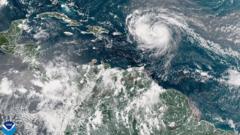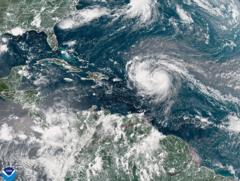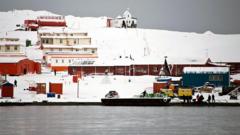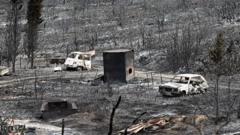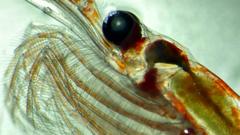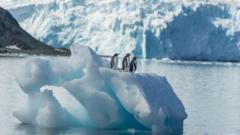A new study highlights the role of saltier seawater in altering Antarctic sea ice dynamics, indicating a shift towards a potentially more unstable climate system.
Saltier Seas Near Antarctica Accelerate Ice Melt, Study Reveals

Saltier Seas Near Antarctica Accelerate Ice Melt, Study Reveals
Research shows increasing salinity in surface waters contributes to the decline of Antarctic sea ice.
Some waters surrounding Antarctica are experiencing rising salinity levels, leading to an accelerated melting of sea ice in the region. This finding, published in the Proceedings of the National Academy of Sciences, suggests that increasing salinity near the ocean's surface may account for the significant reduction in Antarctic sea ice observed in recent years, marking a reversal from previous trends of growth. Alessandro Silvano, a senior scientist at the University of Southampton and lead author of the study, warned of the implications for sea-level rise and global climate patterns, stating, “We are entering a new system, a new world.”
Antarctic sea ice plays a crucial role in regulating temperatures by reflecting sunlight back into space, but since the late 1970s, its extent has been in decline. While Arctic sea ice has rapidly diminished over recent decades, Antarctic sea ice showed growth into the 2010s. The researchers utilized satellite data to monitor changes linked to salt content, though interpreting the data was challenging due to its subtlety. Initial skepticism about the salt content findings shifted to confidence as additional physical measurements supported the trend. These shifts in salinity could lead to further disruptions in the Antarctic environment and impact global weather patterns.
Antarctic sea ice plays a crucial role in regulating temperatures by reflecting sunlight back into space, but since the late 1970s, its extent has been in decline. While Arctic sea ice has rapidly diminished over recent decades, Antarctic sea ice showed growth into the 2010s. The researchers utilized satellite data to monitor changes linked to salt content, though interpreting the data was challenging due to its subtlety. Initial skepticism about the salt content findings shifted to confidence as additional physical measurements supported the trend. These shifts in salinity could lead to further disruptions in the Antarctic environment and impact global weather patterns.

